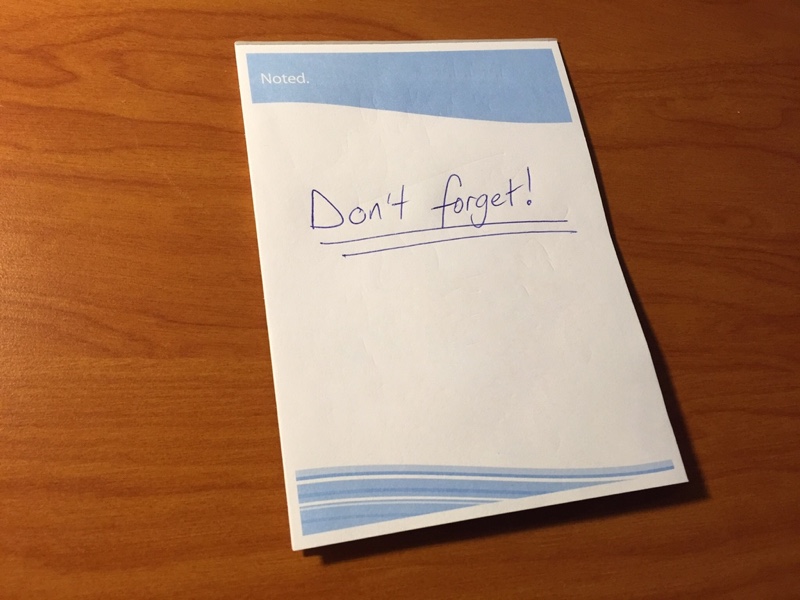For the last two weeks, I’ve been conducting an experiement. (It didn’t start as an experiment, but it’s become one.)
I’ve been carrying two Starbucks gift cards in my pocket. Breast pocket if I have one, or right by my wallet, so I pull them out with my wallet. I figured if I stuck them in my pocket, I’d have them on me, and when I found a spare moment, I could sign in to starbucks.com and roll the balances onto the card I use with the Starbucks app.
It hasn’t worked yet. I’ve seen them 2–3 times a day, but it’s always at the wrong time. I see them when I’m paying at the pump, or confirming the location of the meeting I’m heading to. I have yet to notice them at the computer, where I could do something about them, when I have the time.
I know I have a task to perform, but the trigger is wrong.
A trigger is how you know it’s time to do something. It can be as simple as an alert that pops up on your phone to remind you to take your morning vitamins, or as subtle as a twinge of hunger that takes you away from your desk to the vending machine. (For more on how triggers drive our behavior, see Charles Duhigg’s excellent book, The Power of Habit.)
Triggers will form naturally, but you can also be intentional about them. Here are some of the common triggers you’ll use to be productive.
- OmniFocus. OmniFocus probably has most of your tasks. The forecast will let you see when tasks are due, and you can use the Defer date to track when you want to schedule tasks. You can have OmniFocus notify you when tasks become due or available.
- Reminders. Even if you use OmniFocus, the Reminders app is still handy. In addition to capturing OmniFocus tasks via Siri, you can have your phone remind you when you arrive (or leave) a location. “Remind me to recycle the batteries when I get to work.”
- A tickler file. A hanging file with 43 folders is a great way to set papers aside until a future date. I use it to store birthday cards until it’s time to send them, and to remember to take my wife’s wedding ring in for inspection every six months.
- Door magnets. Your local crafts store probably has thin sheets of magnets. Print out some reminders and stick them where you’ll see them. You can stick “turn down the thermostat” on the front door, or “start me” on the dishwasher.
- Calendar events. Events on your calendar will remind you of meetings with others and time you’ve blocked off for high-value activities. Reviewing your calendar should be part of your weekly and daily review. Most calendar apps will let you set an alarm on the event if you need a reminder.
- Alarms. Your alarm is a trigger to get up in the morning. It can also be a trigger to start wrapping things up for the day.
- An accountability partner. Want to get up earlier to take a walk before starting your day? Get a golden retriever. Who needs an alarm when you have a cold nose to greet you at 5:00 am? Accountability partners will also help you stay motivated and stick to a commitment.
- Leave it in plain sight. This is probably the worst trigger you can try. It’s a trigger of last resort, but we tend to try it first. It leads to clutter on your desk, clutter around the house, and clutter in your inbox.
The key to an effective productivity system is knowing the right thing at the right time, whether that’s where you’re supposed to be, or what you’re supposed to be doing. Each type of trigger can help you be productive in its own way. Learn what works for you and go have fun, knowing that you’ll remember what you need to.
Question: What types of triggers do you use to remember the right things at the right times? Share your thoughts in the comments, on Twitter, LinkedIn, or Facebook.

